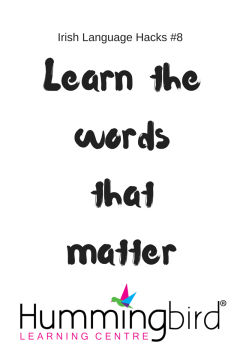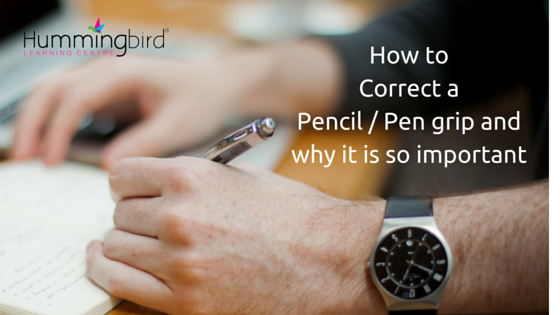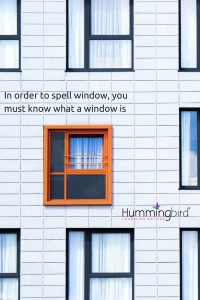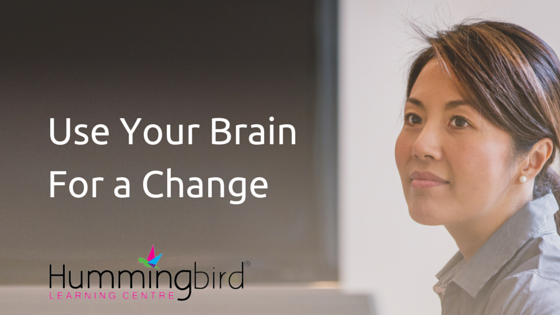Irish Language Hacks for Seachtain na Gaeilge
Seachtain na Gaeilge has started and in a few days Lá le Padraig will be upon us. This year, with the centenary of Eirí Amach 1916 we seem to have a renewed interest in Irish culture and by extension in our language. So if you think that you don’t have any Irish, here are some hacks to get you going again.
#1 You have more Irish than you think!
You’re just out of practice. You read my opening two sentences and you understood them, even though part of them were in Irish. You did Irish in school, it’s there. Our brain holds on to everything it has ever learned, it just needs practice. You have Irish, you’re just out of practice – Tá tú as cleachtadh. It will all come with some practice.
#2 Your Irish doesn’t have to be perfect.
Irish is a language and the purpose of language is communication. I once bought a beautiful hand woven rug in a craft shop in Spain. I had no Spanish & the owner had no English, yet we were able to communicate because I wanted to buy the rug and she wanted to sell it! Where there’s a will, there’s a way. Just start talking in Irish & if you need to put in an English word – put it in! If you go to the Gaeltacht areas, you’ll find this happening all the time!
 # Think like Yoda
# Think like Yoda
Irish is a very unique language in that it follows a sentence structure that only 9% of the world’s languages follow. Its structure is Verb Subject Object. When directly translated into English I always think that it sounds like Yoda speaking in Star Wars. No wonder the birthplace of the Force is in Kerry!
# Irish has very few irregular verbs.
Unlike English which has over 100 irregular verbs, Irish only has 11. Once you know them (and you do already), you’re good to go.
# There is no Yes or No in Irish.
Ever wonder which you can never get a straight yes or no from an Irish person – it’s because it’s not in our psyche. Think about it, listen to people around you. Even in English we continue with the Irish structure – We’d ask – ‘was John sick yesterday?’ We’d never say yes, we’d say ‘he was / he wasn’t’, An raibh Seán tinn inné? Bhí sé /Ní raibh sé
# Grammar helps but it’s not the be all and end all
Make mistakes, make loads of mistakes. Nobody is going to think less of you. You’re (re)learning a language, you’re going to make mistakes. Think about it when you a tourist asks you for information in broken English. Do you ignore them because they are not speaking the Queen’s English? Of course not. The grammar will come and once you are speaking in Irish it will become easier to correct those little butúns – see you understood that!!
# The Modh Coinníollach cannot hurt you.
For some reason the modh coinníollach has been built up into this huge scary monster. But the truth is, the modh coinníollach cannot hurt you. Have you ever thought about what you would do if you won the lotto? Yes? Congratulations, you were thinking in the Modh Coinníollach. It is the conditional tense, something happening on condition of something else happening e.g. I would go on a cruise if I won the lotto. It is that easy.
 # Learn the words that matter
# Learn the words that matter
A new (or forgotten) language means learning lots of new words, which can be very off-putting. But, here’s the big secret, you do NOT need to know all the words of a language to be able to speak it. The reality is that, although you are fluent in it, you don’t know all the words in the English language either. Use the 80/20 principle here, and realise that 20% of the effort you spend on acquiring new vocabulary could ultimately give you 80% comprehension in Irish—for instance, in English just 300 words make up 65% of all written material. We use those words a lot, and that’s the case in every other language, including Irish as well. So invest your time well and learn those words that you are going to get maximum use out of. You can always learn the rest in the future.
# Take advantage of free stuff
What did we do before the internet? Want to learn Irish – or any other language for that matter? You Tube is great, just be sure to get the dialect correct. If you’re from Munster, then learn Munster Irish! Find native speakers online & skype with them. Watch TG4 – there are some fantastic documentaries on it.
There is an excellent free app called Duolingo, which could a great place to start your Irish language renaissance.
#Listen to Raidió na Gaeltachta
I had it on in the background today while typing this and I found myself thinking in Irish while trying to type in English. It was a surreal experience because I’m not a native speaker. I could follow a good share of the interview, they were talking about exporting shamrock from Ballinskelligs & how it was sent to the UK by courier and they agreed , is iontach an system at DHL!
So if the native speakers are happy to throw in the cúpla focal Béarla, you can be happy to too.
If you’ve read all the way down to here you may be interested in ‘The Irish Course™’. It is a innovative approach to the Irish Language incorporating the Hummingbird Learning Method®. We are finalising dates at present so to be one of the first to hear about it just email me at elaine@hummingbirdlearning.com and I will put you on the advanced notice list.
Slán.

Elaine Sparling is the CEO of the award winning Hummingbird Learning Centre®. Based in Adare, Co Limerick and Tralee, Co Kerry, she works with clients on a one to one basis and can be contacted on 087-2996054 or through their website www.hummingbirdlearning.com. They are currently developing a week long Irish Course for summer 2016. The online version of their popular workshop The Secrets to Successful Spelling™ is available through their website and Facebook page and they have launched their Study Success Program™ for second & third level students.



 The tripod grip utilizes three fingers to secure a writing utensil: the thumb and forefinger directing, with the utensil resting on the middle finger. The quadropod grip uses four fingers working together to stabilize the writing tool.
The tripod grip utilizes three fingers to secure a writing utensil: the thumb and forefinger directing, with the utensil resting on the middle finger. The quadropod grip uses four fingers working together to stabilize the writing tool. And after your child does a little bit of doodling, colouring, and painting, the tripod grip will become as easy as breathing. It’s just imperative for parents to play an integral role in instructing early on, with demonstrating, correcting, and modelling. I cannot stress this enough – children seem to be arriving to Montessori, playschool and big school with really poor tripod grips and if not corrected early it can become a problem later on.
And after your child does a little bit of doodling, colouring, and painting, the tripod grip will become as easy as breathing. It’s just imperative for parents to play an integral role in instructing early on, with demonstrating, correcting, and modelling. I cannot stress this enough – children seem to be arriving to Montessori, playschool and big school with really poor tripod grips and if not corrected early it can become a problem later on. Many teachers have found this to be true. Although most of the 220 Dolch words are phonetic, children are sometimes told that they can’t be ‘sounded out’ using common sound-to-letter implicit phonics patterns and have to be learned by sight; hence the alternative term, ‘sight word’. Unfortunately, English is not a simple a phonetic language and not all words can be sounded out. So Dolch maintained that teaching children the simplicity of recognising words by sight, they stand a better chance at becoming fluent readers.
Many teachers have found this to be true. Although most of the 220 Dolch words are phonetic, children are sometimes told that they can’t be ‘sounded out’ using common sound-to-letter implicit phonics patterns and have to be learned by sight; hence the alternative term, ‘sight word’. Unfortunately, English is not a simple a phonetic language and not all words can be sounded out. So Dolch maintained that teaching children the simplicity of recognising words by sight, they stand a better chance at becoming fluent readers.

 There is a line in a song by the Irish band The Fat Lady Sings and it says “We don’t leave ourselves in many things, just in letter, leases, writs and rings, And when the last one’s sold or lost or gone, we don’t belong here, we don’t belong”.
There is a line in a song by the Irish band The Fat Lady Sings and it says “We don’t leave ourselves in many things, just in letter, leases, writs and rings, And when the last one’s sold or lost or gone, we don’t belong here, we don’t belong”. Elaine Sparling is the CEO of the award winning Hummingbird Learning Centre®. Based in Adare, Co Limerick and Tralee, Co Kerry, she works with clients on a one to one basis and can be contacted on 087-2996054 or through their website
Elaine Sparling is the CEO of the award winning Hummingbird Learning Centre®. Based in Adare, Co Limerick and Tralee, Co Kerry, she works with clients on a one to one basis and can be contacted on 087-2996054 or through their website 











